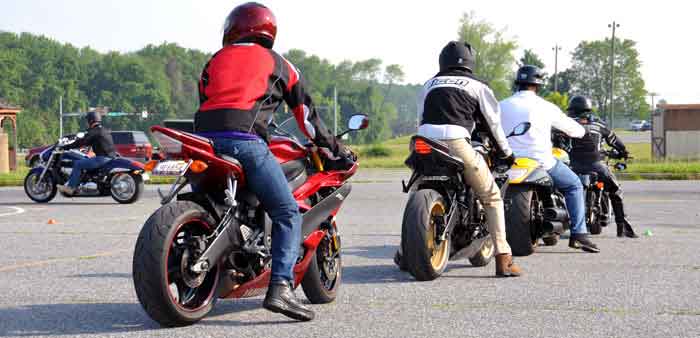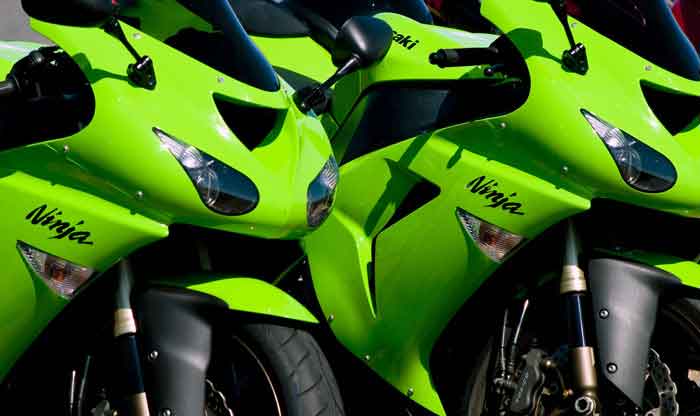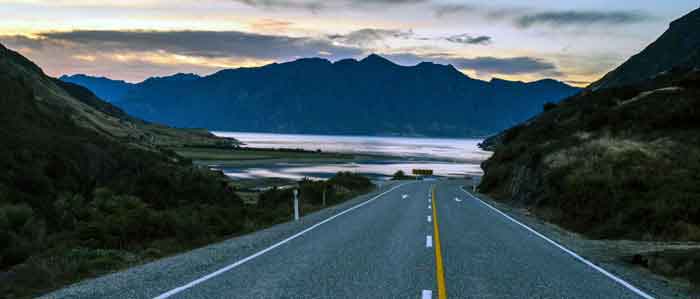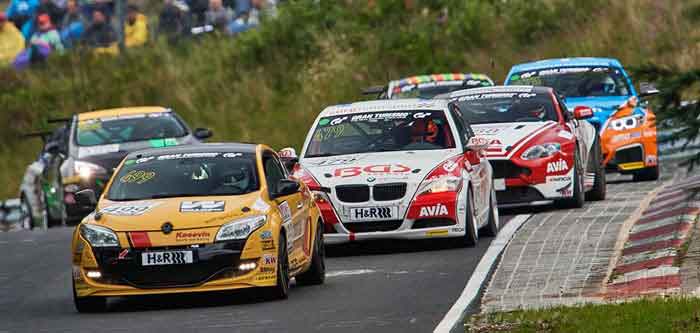Driving a motorbike is often considered very dangerous for the driver due to exposure and other's lack of visibility of the rider. In a car you are protected by a crumple zone, by air bag, by seatbelt with locking devices, roofs, bumpers and doors that motorcycles have none of, leaving the driver in a much more vulnerable position. Here are a few ways you can maximise your efforts to stay safe on the road when riding your motorbike.
Make yourself visible - one of the most common causes of accidents for motorcycle riders is when they are not properly seen by other drivers on the road. Consider that you are much smaller than a car, and that your driving path differs from the standard vehicle on the road and is not always expected, and that a driver who is not paying so much attention will much more easily look over a motorcycle than another car. By wearing bright and reflective clothing, you will show up better, particularly in bad weather or at night. By using your lights, even in the day, you will also be easier to spot.
Use a helmet - in most countries this is the law, however even when it is not a legal requirement, this is essential safety gear that will be the difference between life and death in the event of an accident. A full face helmet is the best protection, and you should always be aware that helmets can deteriorate over time and should be regularly checked and replaced when necessary to do so.
Use protective clothing - aside from protecting your head is protecting the rest of your body. Wearing a full body of leathers and thick boots may not be comfortable on a hot summer day, but it will be much more comfortable compared to a pair of jeans and a t-shirt when you're sliding along the asphalt. Gloves and over the ankle footwear are important to ensure you are protecting your whole body. These articles of attire will also protect you from wind, cold, bugs and also provide better protection from flying debris in accidents.
Drive defensively - while in car/motorbike collisions the car driver is the one at fault 60% of time, you should not argue with anything bigger than you on the road for the sake of your own safety. Considering how much more vulnerable you are, driving on the side of caution has much greater benefits for you than a car driver.
Avoid bad weather - motorcycle riders are even more at risk during wet and icy conditions, and if conditions are not ideal, you may be much better off taking pubic transport or your car.
Take a course - motorcycle safety courses are available in most places around the world and are an excellent way to improve your skills and to check that you are riding correctly and safely. Ensuring that your riding is optimised towards your safety is perhaps the biggest step you can make towards securing your personal safety when riding your bike.





